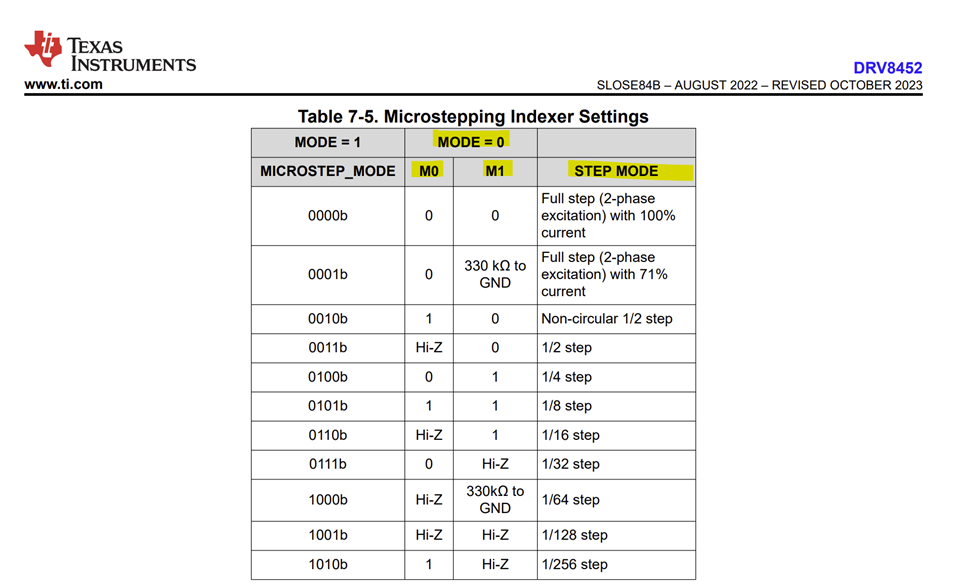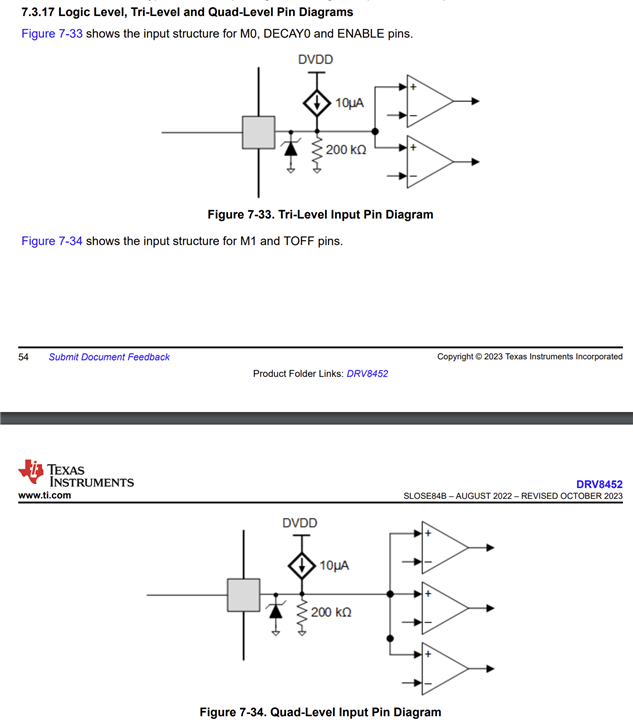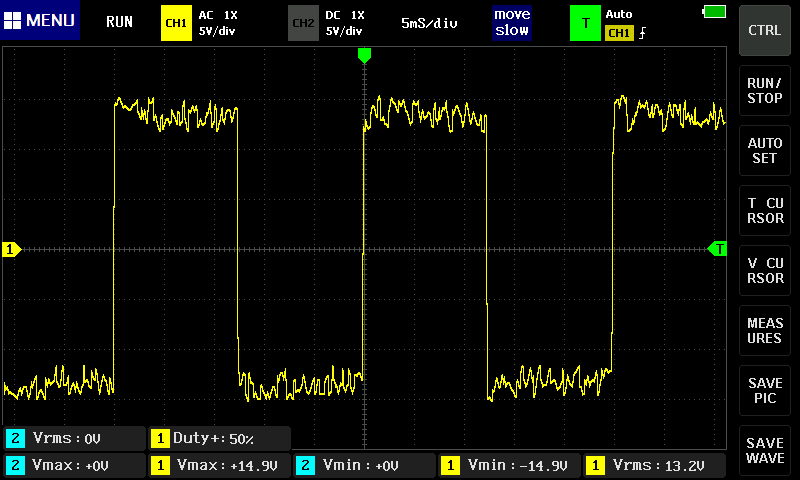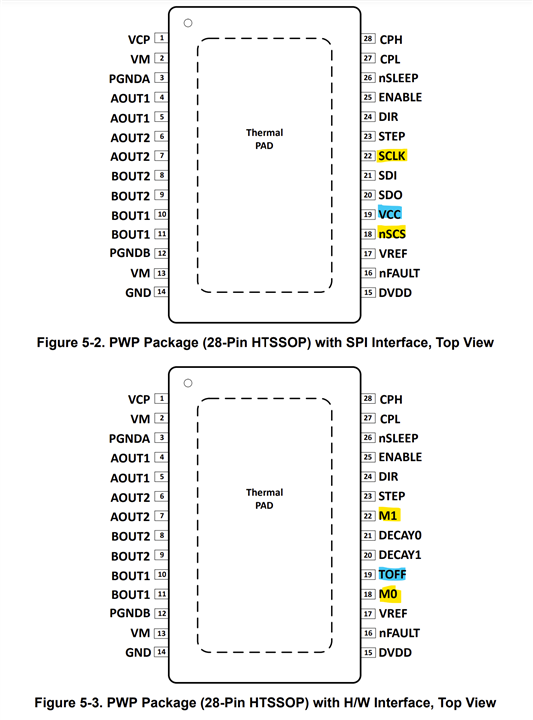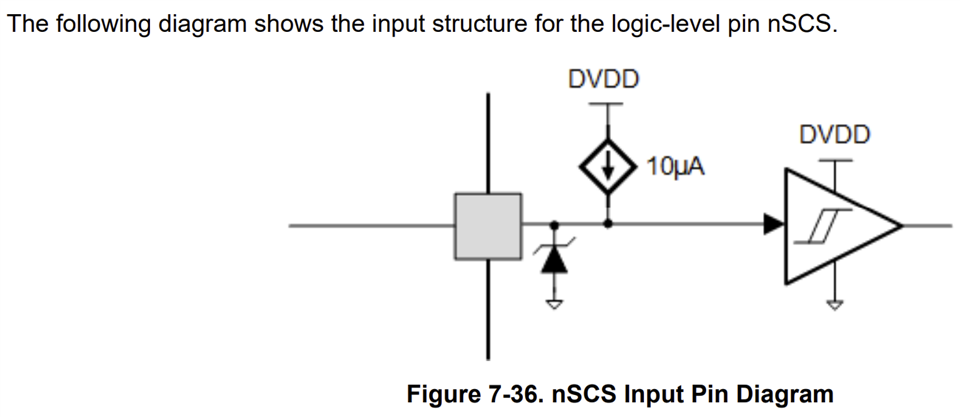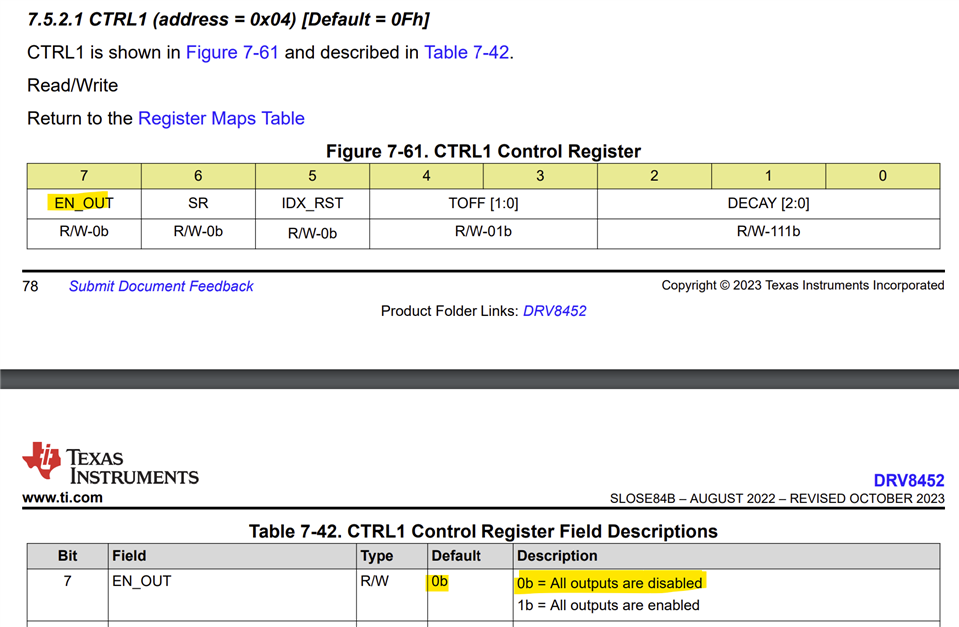Other Parts Discussed in Thread: DRV8462, DRV8434EVM
Hi, I have DRV8452PWP (HWinterface, not SPI)
but when I connect the board to waveform generator, it goes like one pulse = one step of motor, that would be fine if i would set it to 1/1 microstepping (as I understood datasheet), but I have set some microstepping (before powering it up) but nothing changed. Motor steps are pretty hard so it must be 1/1 stepping. If i try to short some of M0/M1 to ground while motor is runnig, there is no difference.
Im using NEMA23 at 24V (SY57STH76-2804A)
Here is my schematic: (just prototype)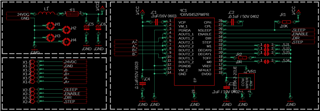
I have measured the voltage in pins of DRV8452 directly, and it was correct, if I connected them to DVDD or GND, there was 5V and 0V respectively.
In datasheet I found this:

So HWinterface supports microstepping, do I have to enable it somehow?
Thank you for helping me.
Have a great day
Ondra


